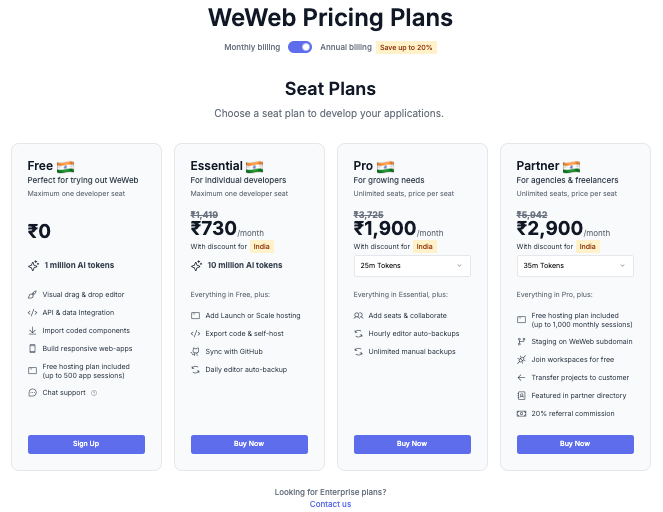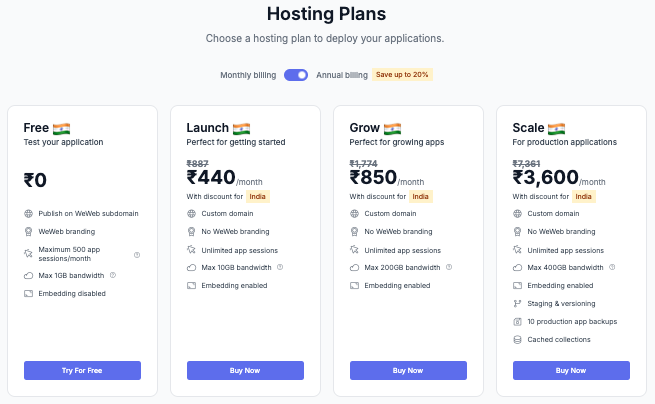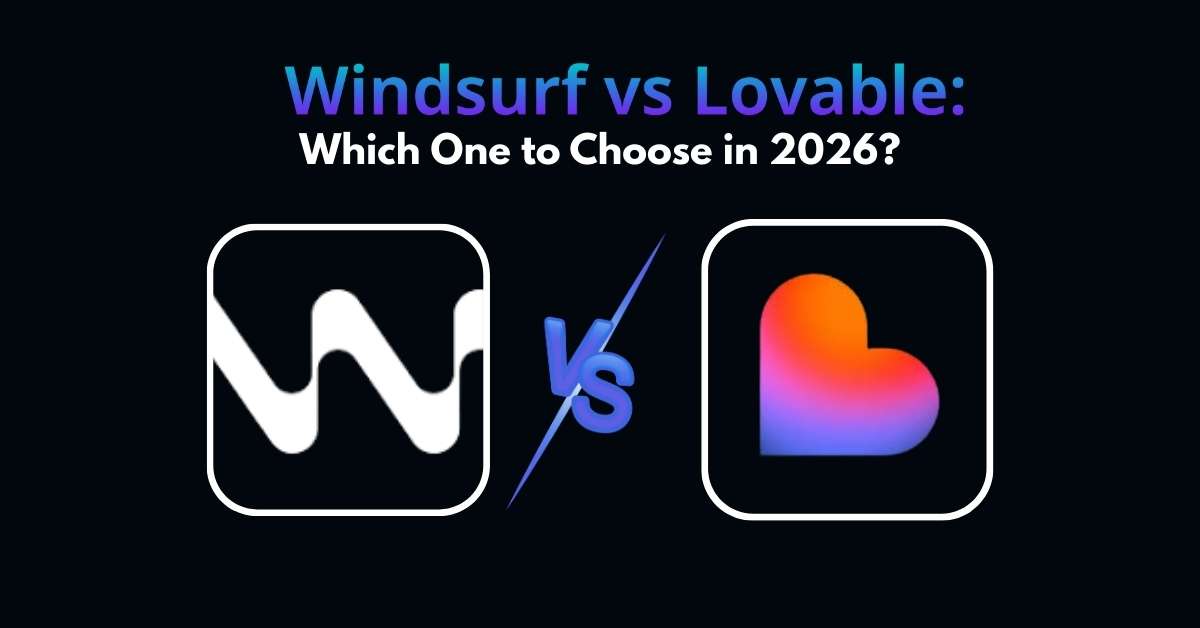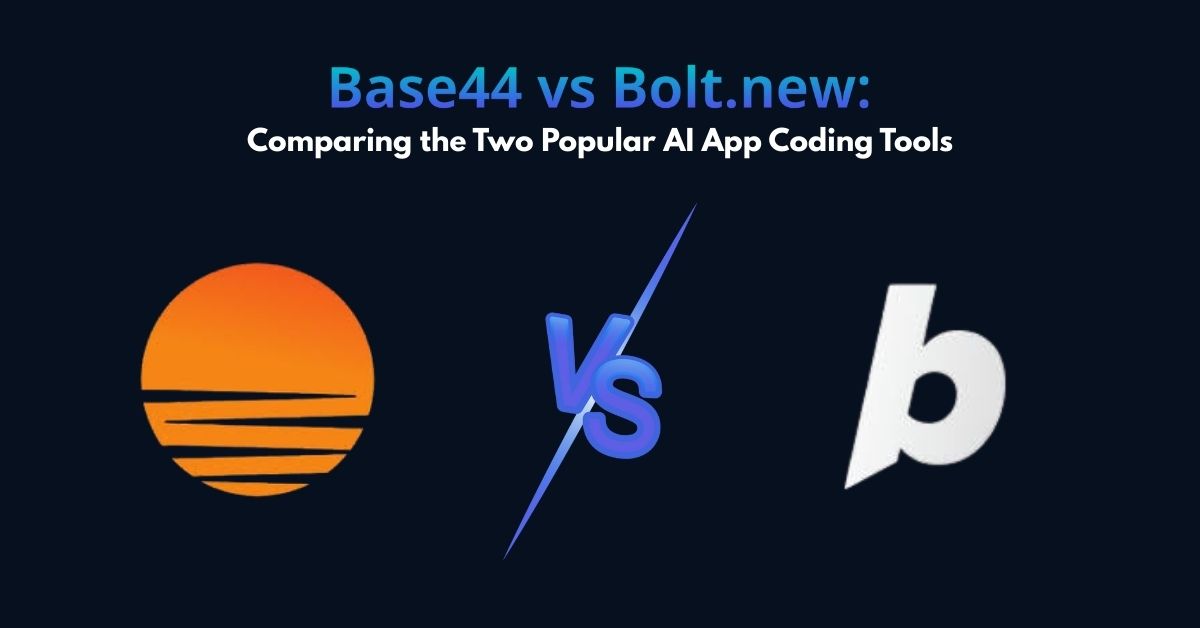What is WeWeb AI? Detailed Review of the AI App Builder

In today’s no-code revolution, WeWeb is making waves as a powerful tool for teams that want to build sleek, scalable web apps without writing a single line of code. While it may not have the same name recognition as Webflow or Bubble just yet, WeWeb brings a fresh, frontend-focused approach that’s gaining serious traction among designers, developers, and startups alike.
Built for speed, flexibility, and real-time data integration, WeWeb lets you create fully responsive web apps that connect directly to your backend. Think Supabase, Xano, Airtable, or REST APIs. Its visual interface simplifies complex workflows while still giving you the power to extend with custom code when needed.
In this guide, we’ll break down exactly what WeWeb is, how it works, key features, pros and cons, and how it stacks up against popular alternatives. Whether you’re launching a SaaS product, building an internal tool, or creating a custom client portal, this is everything you need to know before diving in.
What is WeWeb AI?
WeWeb AI is a no-code vibe coding tool for building responsive web applications using natural language prompts. It combines design, logic, and data integration into one workflow, helping users create frontend interfaces and backend logic faster. The AI assistant can generate layouts, connect to data sources like Supabase or Xano, and build workflows without writing manual code.
It focuses on frontend-first development, allowing teams to design pixel-perfect UIs while the AI handles complex tasks like data binding, pagination, and logic automation. Think of it as a smarter, design-driven alternative to traditional builders like Bubble or Webflow, but with more control over your backend, APIs, and app behavior.
Also Read:
What is Windsurf? A Deep Dive into the AI Builder
You Might Like Reading This:
What is Emergent AI? A Deep Dive into the AI App Builder
Key Features of WeWeb AI App Builder
UI & Page Generation
WeWeb AI can generate full pages or components from natural language prompts or screenshots. It creates responsive layouts, applies styling, and sets up interactions like hover states and conditional rendering.
Backend & Data Integration
WeWeb AI can create database schemas such as Supabase tables, manage tables, and establish API endpoints. It also supports integrations with third-party services like Stripe and Zapier.
Logic, Workflows & Automation
The AI handles workflow creation including validations, data binding, filtering, pagination, and formulas. For complex operations, it outputs JavaScript logic that can be converted into no-code steps.
Full Editability & Custom Code
Every AI-generated asset is fully editable in the visual editor. You can add custom code in JavaScript or TypeScript, tweak components, and override AI output at any point.
Design Systems & Style Consistency
WeWeb AI can auto-create design tokens such as typography, color palettes, and spacing. These tokens are applied across components for a consistent look and feel.
Deployment & Version Control
You can deploy your app directly, roll back changes, and manage versions. The AI integrates with WeWeb’s staging and production setup to support continuous iteration.
Also Read: What is Codev? Everything About This AI App Builder
Pros and Cons of WeWeb AI
✅ Pros of WeWeb AI
AI-Powered Speed:
WeWeb AI dramatically accelerates app creation by turning plain-text prompts into ready-to-edit interfaces, workflows, and logic.
Frontend-First Design:
Built for creating pixel-perfect UIs with full responsiveness, advanced layout control, and clean design systems.
Flexible Data Integration:
Connects to REST APIs, GraphQL, Supabase, Airtable, Xano, and other backends without complex setup.
Editable AI Output:
Every element created by the AI can be manually adjusted, giving users full control over code, logic, and design.
Custom Code Ready:
Supports JavaScript and TypeScript for adding complex functionality or custom behaviors when needed.
Scalable Architecture:
Supports multi-page apps, reusable components, and environment-based deployment workflows for staging and production.
❌ Cons of WeWeb AI
Early Beta Limitations:
Since WeWeb AI is still in beta, it can occasionally generate inaccurate or incomplete components.
Learning Curve for Beginners:
Although no-code, some features (like workflow automation and data binding) may require technical understanding.
No Backend Logic Built-In:
You must use external tools like Xano or Supabase for backend logic, which adds extra setup for full-stack functionality.
Limited Pre-Built Templates:
Compared to older platforms, there are fewer ready-made components or layouts available out of the box.
Smaller Community:
WeWeb has a growing but still relatively small ecosystem, meaning less user-generated content and third-party support.
Also Read: What is Hostinger Horizons? A Technical Overview for Modern Builders
WeWeb: Pricing Explained
WeWeb uses a two-part pricing model:
Seat Plans – for building your app
Hosting Plans – for publishing and going live
You’ll need both if you plan to build and host on WeWeb.
1. Seat Plans (For Building in the Editor)
Seat plans are for people who use the WeWeb editor. This is where you design, connect data, and build workflows.

Available seat plans:
- Free –
Great for trying out the editor. Limited access. No publishing to a custom domain. - Essential –
Unlocks more features, basic AI usage, and limited team collaboration. - Pro –
Includes advanced features like code export, more AI tokens, and extended API access. - Partner –
Built for teams or agencies. Offers unlimited AI tokens, multiple team seats, and priority support.
Note: You only pay for users who actually build the app (not for viewers or end users).
2. Hosting Plans (For Publishing Your App)
Hosting plans are for publishing your app to the web. If you’re not self-hosting, you’ll need a hosting plan to go live.

Available hosting plans:
- Free –
Host your app on a weweb.site subdomain. Good for internal demos and testing. - Launch –
Adds a custom domain, SSL, and higher session limits. Ideal for early-stage apps. - Grow –
Designed for growing apps with more traffic. Includes higher bandwidth (up to 200 GB) and more sessions. - Scale –
Built for large, high-traffic apps or enterprise-level deployment.
Now You Should Know About the AI Tokens and Usage
Paid seat plans include AI tokens, which you use to generate layouts, logic, and app components with WeWeb AI.
- Tokens reset monthly
- Errors no longer consume tokens
- Pro and Partner plans come with more tokens and priority AI access
How to Choose the Right Plan?
If you’re just testing or learning, the Free seat and Free hosting plans are enough. For small production apps, go with the Essential seat and Launch hosting. Apps with a growing user base fit best with the Pro seat and Grow hosting. For high-traffic projects or client work, the Partner seat combined with the Scale hosting plan offers the most flexibility. If you prefer to self-host, choose the Pro or Partner seat plans; these let you export your code and skip WeWeb’s hosting entirely.
Best WeWeb Alternative: Vitara.AI
Vitara.AI is a vibe coding platform that turns plain language prompts into coherent, production-ready web apps. It handles both frontend and backend logic so teams can move from idea to deployable product without tedious setup. Think of it as a smart, AI-driven alternative to WeWeb but one that emphasizes full code generation and ownership.
Features of Vitara.AI that Make It Stand Out
- React-powered frontend with responsive, modern design components
- Built-in Supabase backend with database, auth, real-time updating, and auto‑generated APIs
- Browser-based development—no local setup required
- GitHub integration for version control and collaboration
- Prompt-based workflows for regenerating UI, logic, or new features
- Clean, production‑grade code structure that’s easy to extend and maintain
Why Vitara.AI Makes a Strong Alternative to WeWeb
Vitara.AI offers several advantages that appeal especially to developers and teams who want more control:
- You describe your app in natural language and Vitara builds it automatically very hands‑off at the start
- You get full control over the generated code, so you’re never locked into the platform
- The Supabase backend is reliable and familiar to many modern dev teams
- Its in-browser IDE means you can begin building immediately without installs
- The resulting code is clean, scalable, and suitable for long-term maintenance
Also Read: Vitara.ai: The Best Alternative to Vercel V0
Final Thoughts: Who Should Go For WeWeb AI?
WeWeb AI is a solid choice for teams that want speed, flexibility, and visual control without diving deep into code. It’s especially useful for:
- No-code builders who need more power than traditional site builders
- Designers who want pixel-perfect control without relying on developers
- Startups launching MVPs or internal tools quickly
- Agencies building custom frontends for clients using modern backends like Supabase or Xano
- Technical users who want visual development but still need access to custom logic and code
If you’re looking for full code ownership, a built-in backend, or stronger versioning tools, a platform like Vitara.AI might suit you better. But if you want to visually build fast, connect to any backend, and launch polished apps without compromise, WeWeb AI is one of the best tools available today.
Frequently Asked Questions
What is WeWeb AI?
WeWeb AI is a no‑code, AI‑powered app builder designed to help you launch responsive web apps quickly. It translates natural language prompts into layouts, data workflows, and logic.
Is WeWeb AI suitable for beginners?
Yes, WeWeb AI offers a strong starting point for beginners, but there are caveats.
Can I connect WeWeb AI to my own backend like Supabase or Xano?
Yes, you absolutely can. WeWeb AI supports native integrations with both Supabase and Xano, allowing you to connect your backend, handle CRUD operations, user authentication, and more.
Does WeWeb AI support custom coding?
Yes, it fully supports custom coding alongside no‑code development.
Can I export my app’s code from WeWeb AI?
Yes, you can export your project’s code and host it independently.
What’s the best alternative to Weweb AI?
If you’re looking for the best alternative to WeWeb AI, a standout choice is Vitara.AI.
How secure is data on apps built with WeWeb AI?
WeWeb AI is secure, if you set it up correctly.
Here’s a quick breakdown:
- Built-in security tools: Auth plugins, page restrictions, and GDPR-compliant data policies.
- You control backend access: Secure your APIs (e.g., Supabase, Xano) with role-based and row-level rules.
- Frontend isn’t enough: Hidden elements can still be exposed in the browser. Never send sensitive data to the client unless needed.
- Optional self-hosting: Export your code and host it securely on your own server.




